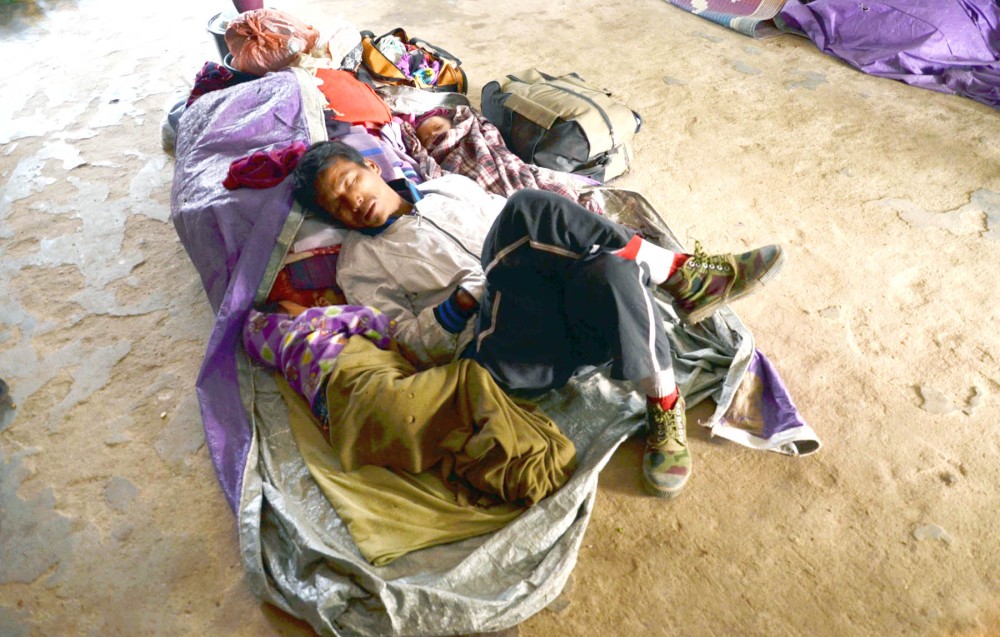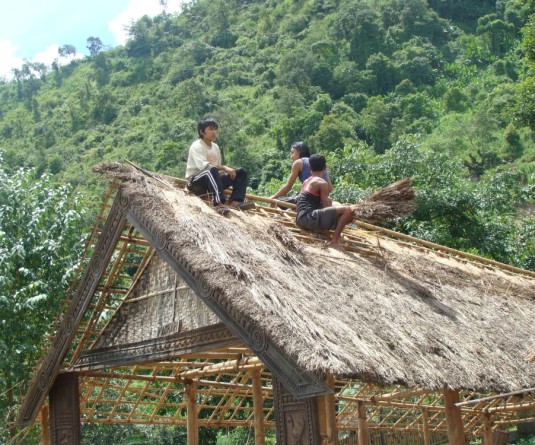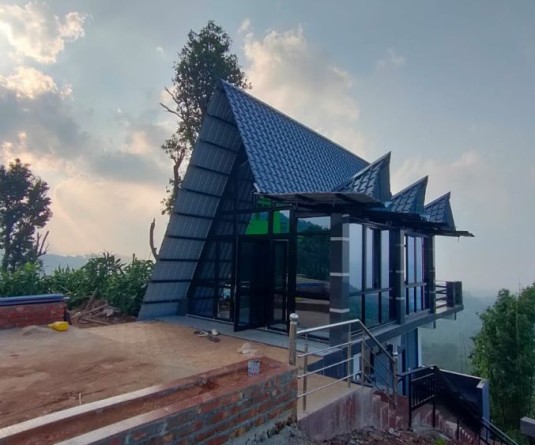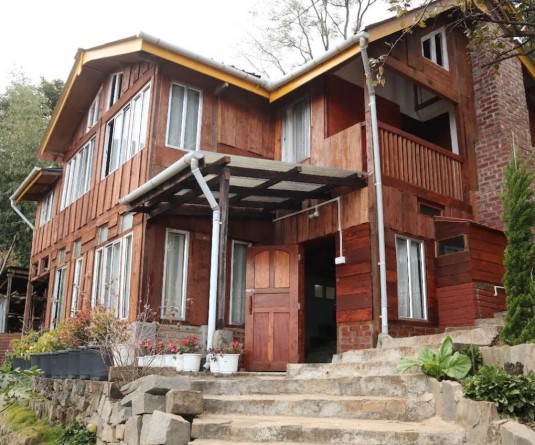More than 2000 people were displaced by the violence in Karbi Anglong. Seen here is a displaced person with a child and a baby at a relief camp in Santipur, Bokajan. Displaced families have expressed the desire to go back to their villages and are being facilitated by the Assam police and the CRPF. Requests have been made to the Assam government to provide books, uniforms, bags and hostel facilities to students whose belongings were burnt in December. (Morung Photo/Caisii Mao)

Morung Express News
Dimapur | January 8
The young and old of the Karbi and Rengma communities have geared up to bring peace to the land, even as it seemed evasive at a point of time. And peace efforts, say elders from both communities, must continue.
“Understanding will emerge when leaders—social, religious and political—meet, review their position, strengthen bonds, forgive and forget,” says former director of the Peace Affairs Committee of the Nagaland Baptist Churches Council, Rev. Kari Longchar. “If there is someone to lead the way for the common people, they will rush to seek peace,” he asserts, further suggesting that such guidance could also come from either the Axoms or other communities that approach communal harmony with a positive outlook.
That can happen, of course, with cooperation from other Naga tribes (apart from the Rengma), which, according to some elders, should approach the idea of peace with an “open mind.”
As Rev. Longchar puts it, “we, the Naga people, might be assumed to be supporters of the Rengma but we should be cautious of supporting or condemning any one or the other unreasonably.”
“The Nagas must go to Diphu with a completely open mind about the need to be good neighbours, about how to support each other,” indicates peace activist Niketu Iralu. For him, neither the Karbi nor the Naga side should be undermined, and thinking must go beyond “political and economic agendas.”
“The people must be able to see beyond provocation and counter provocation—we should be able to strengthen links between us and them to renew long term relationships,” maintains Iralu. He has long held the metaphor for the North East of India that “we’re on the same boat.” The cabins that people(s) inhabit might be different but if one punches holes in the boat, everyone sinks.
And if there is a third party punching holes in the boat, “they and their agendas should be exposed,” asserts Iralu. “If we cannot achieve peace soon, evil forces may try to create more tension by taking advantage of the situation,” highlights Rev. Longchar, reflecting senior retired IAS official, J.I. Kathar’s words. “Since 1951 there has been a systematic attempt to reduce the tribal—as much as I detest that word—population of Karbi Anglong,” he says, adding, “currently there are only 53% tribals left in Karbi Anglong—less than 50% could call for the withdrawal of the sixth schedule (of the Indian Constitution) from the district.” Since 2003, state forces in conjunction with a certain right wing organization and certain Indian intelligence agencies, reveals Kathar, have been applying the ‘divide and rule’ policy effectively to “impoverish, humiliate and debase us.”
This is fuelled, in no small part, through the military means available to the people of the region. As long as the region remains militarized, there is little to taken control of. “We are helpless in disarming the region,” laments Rongbong Terang, former president of the Assam Sahitya Sabha. “There is great friendship between the Rengma and Karbi people; we will be able to re-establish relationships but the central government should work to disarm the region first of all,” he insists.
But developing relationships, in this situation, can also be an uphill task if “mutual respect” between the communities is not restored and communicated. Unlike others, PS Lorin, a senior educationist, recommends that political aspirations must be kept in mind for dialogue to progress, and past hurts inflicted on each other be cleared. “Territories need to be properly demarcated. Normalcy can only be restored by respecting each other. Peace can be brokered by prominent NGOs,” advises Lorin. “People to people dialogues and discussions are necessary—not just one, but many seminars and closed door meetings are required between the two communities to work together and restore peace,” agrees Kathar.
While the elders have given their advice, the young are implementing peace in tandem. Negotiations and dialogues between the Rengma Naga Students’ Union and the Karbi Students’ Association of Karbi Anglong have averted any bandhs and blockades that seemed likely, and that could have given rise to more hostility between the two communities. On Thursday evening, they have jointly organized a candle light vigil in Diphu town for the 15 lost lives in the ongoing conflict—the two communities will pray together for the souls. It is exemplary of how, even in the presence of divisive forces, people-to-people collaboration can rise to the occasion and above violence.






